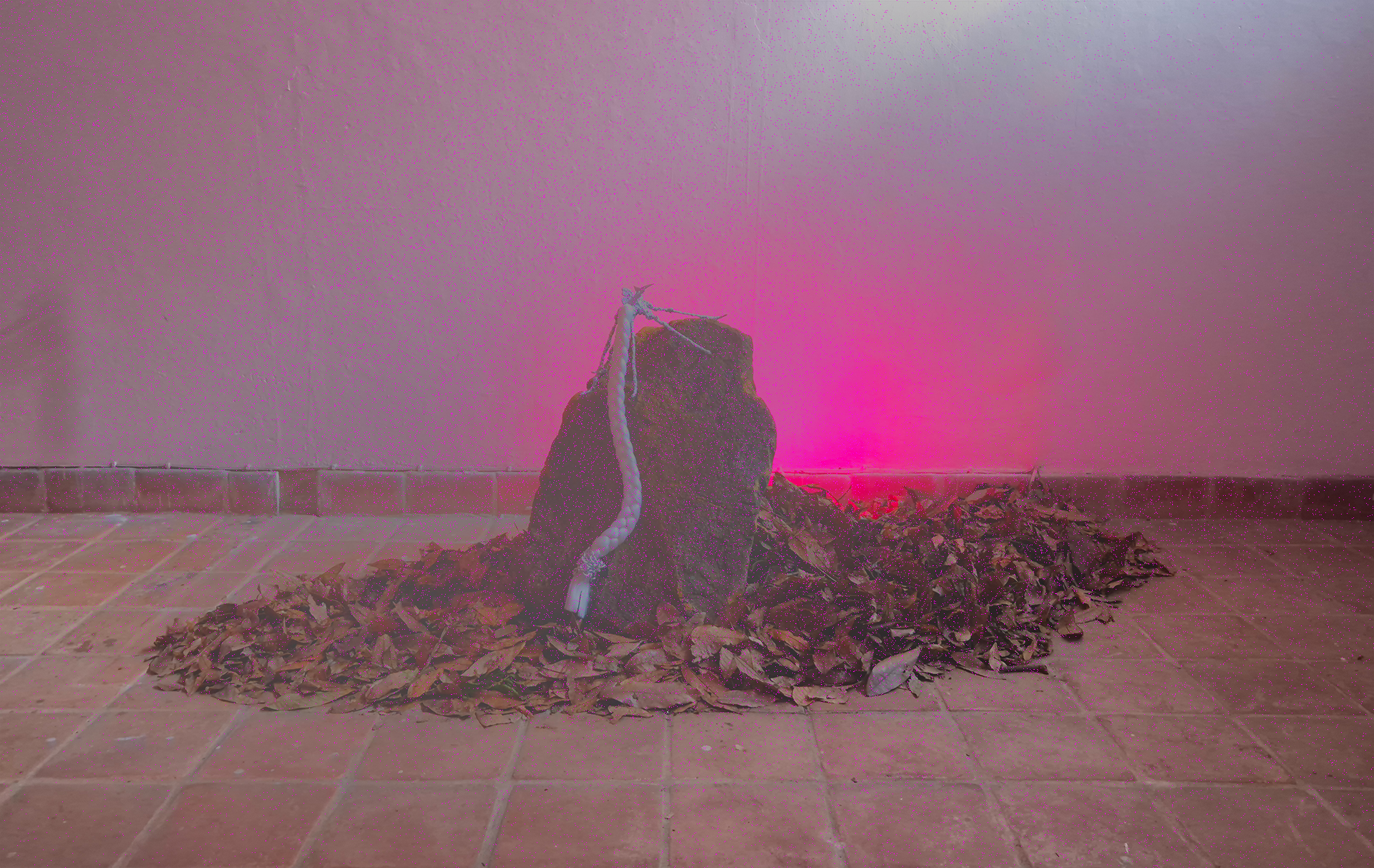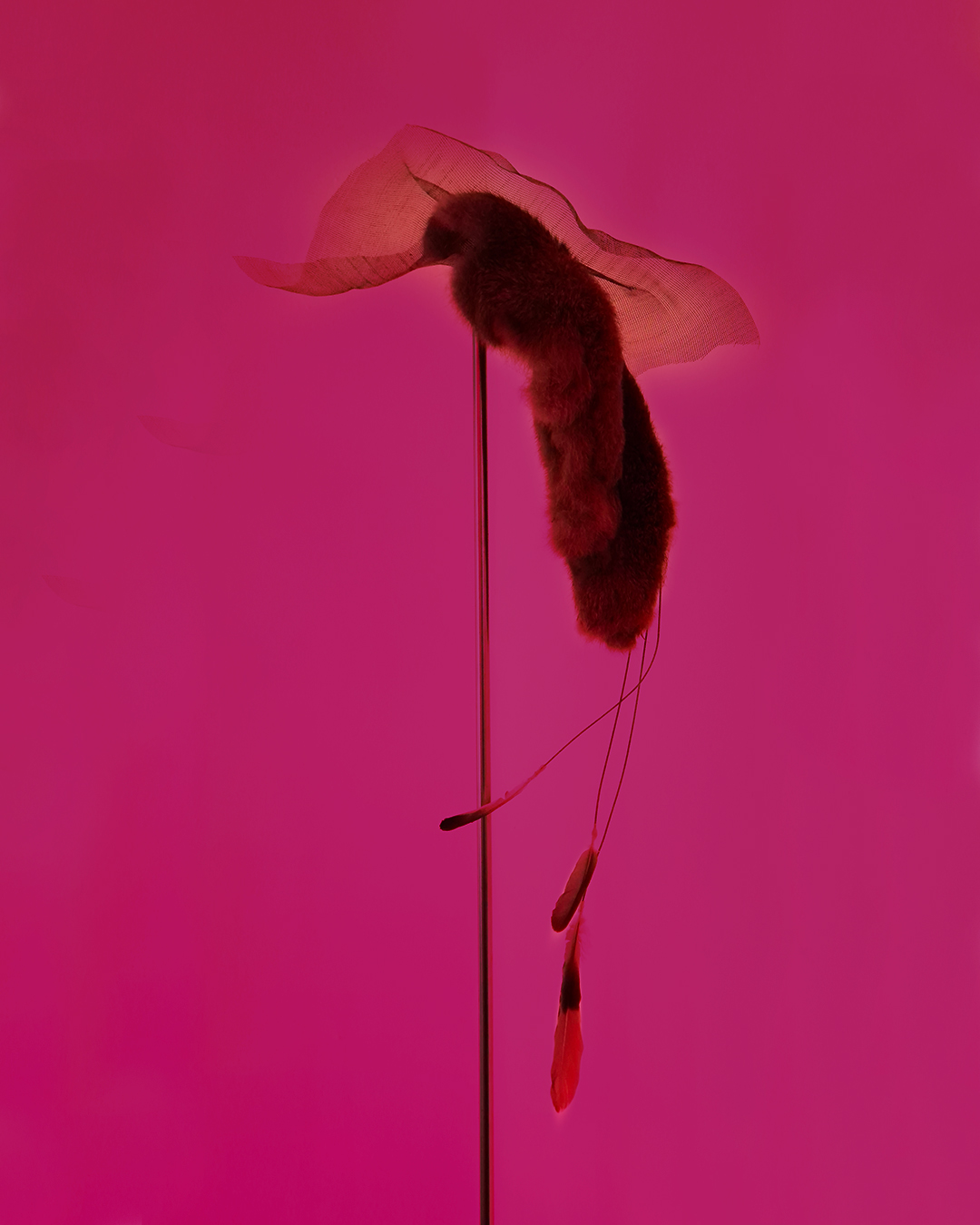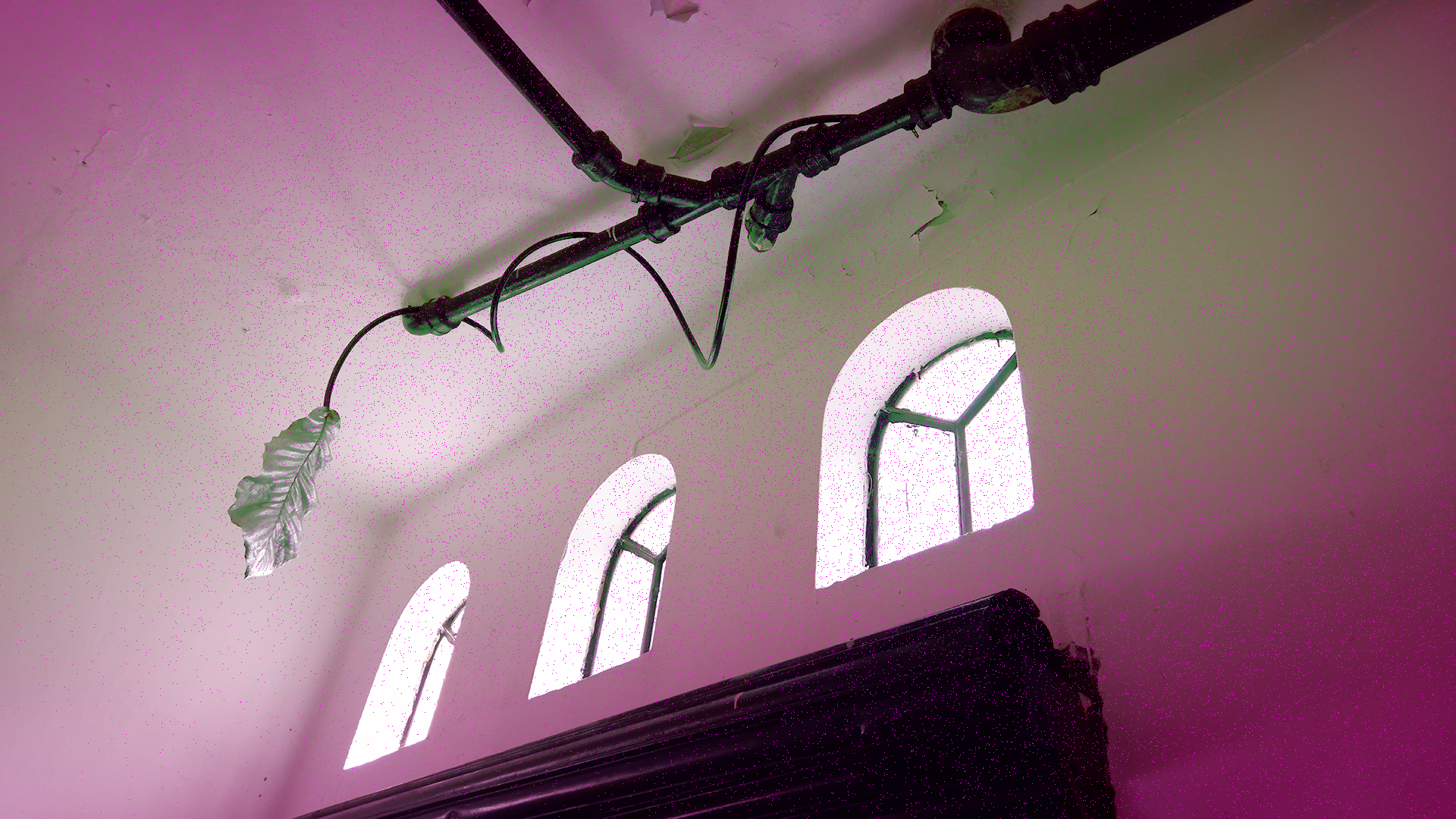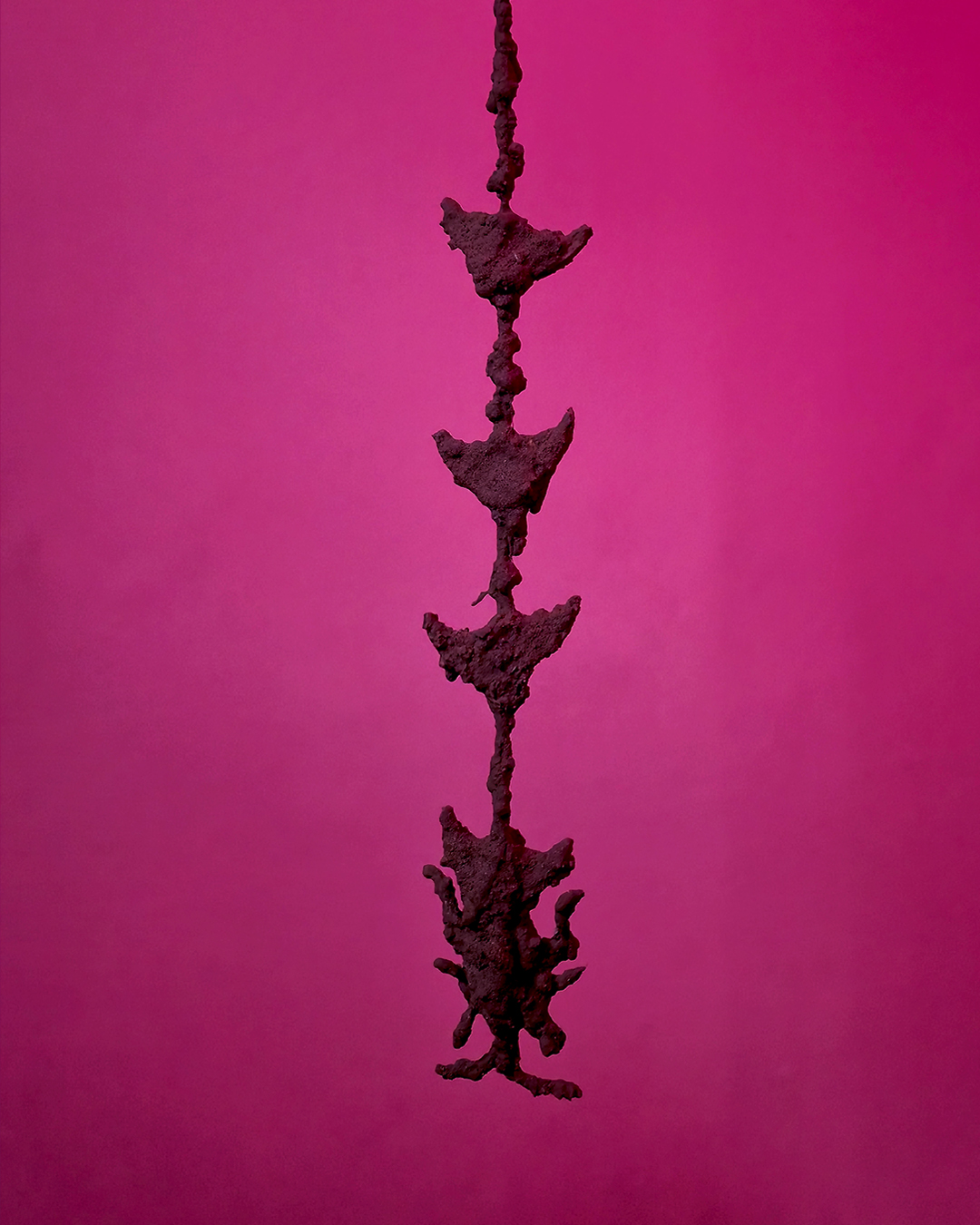
Article
Composing a Forest: Gestures and Fantasies for an Uncertain Future at Espacio Cabeza
by Gabriel Sánchez-Mejorada y Nahuel Sánchez Tolosa
Reading time
3 min
A forest contains a pond where the whisper of its movement conjures a magical state. What imaginaries can we construct about a near future shaped around water? Is it possible to think of water as a living archive of encounter? Could it be that, despite their adaptation, other beings and entities still need to organize around bodies of water? Can we imagine, through artistic practices, new ways of relating to water and becoming subjects of care?
Charca, our exhibition at Espacio Cabeza, is a persistent exploration of these questions. At the same time, it imagines the possibilities of a landscape that resists the chaos of ecological collapse as well as the onslaught of humankind—in the form of fires, real estate developments, and deforestation. Faced with the imminent loss of nonhuman species, the territory becomes a site of resistance.

The project activates new mirrored narratives that seek to subvert hegemonic discourses through encounter, viewed through a Latin American, queer, and ecological lens. It is a story that brings into question the notion of the post-landscape: those landscapes that have long been arriving and with which we now coexist, formed by the complex relations between factory dumps, rivers, animals, plants, waste, rubble, and more. In the cracks that emerge between these encounters, a glimmer of life persists.
Melancholy and confusion are reflected in the turbulent waters of El Nixticuil Forest, located in the northern municipality of Zapopan. These small, forgotten reserves function as a palliative for the voracity of wildfires. That finite possibility refracts, through water, the breath of a new ecosystem rising from the ruins.

In this context, animals and plant beings reconfigure both land and industrial materials, fusing their substances and giving way to impossible reciprocities. Willful plants that affect and touch us tell the story of how we have related to them—and how those ties have forced them to grow and survive within an obscured complexity. At the same time, vital forces in the form of animals make themselves present through limbs and new morphologies of adaptation: wings, claws, tails, and metal spines allow these mutant animals to survive the inhospitable and compose a new forest.

A pink specter lets us glimpse the silhouettes refracted in the water. This twilight appears as an escape route, a light guiding us toward an unexpected paradise, the illusion of being somewhere else, anywhere else. Perhaps it is time for a collective, diverse encounter to spark a movement toward a refuge, where our memory reminds us of the places we no longer wish to return to.
Charca is thus a space of possibility, inviting us to theorize, imagine, and design a livable territory. Functioning as a bridge between the future and the past, it urges us to reinvent the ways we experience the present.
— Gabriel Sánchez-Mejorada y Nahuel Sánchez Tolosa
Translated to English by Luis Sokol
Published on August 3 2025